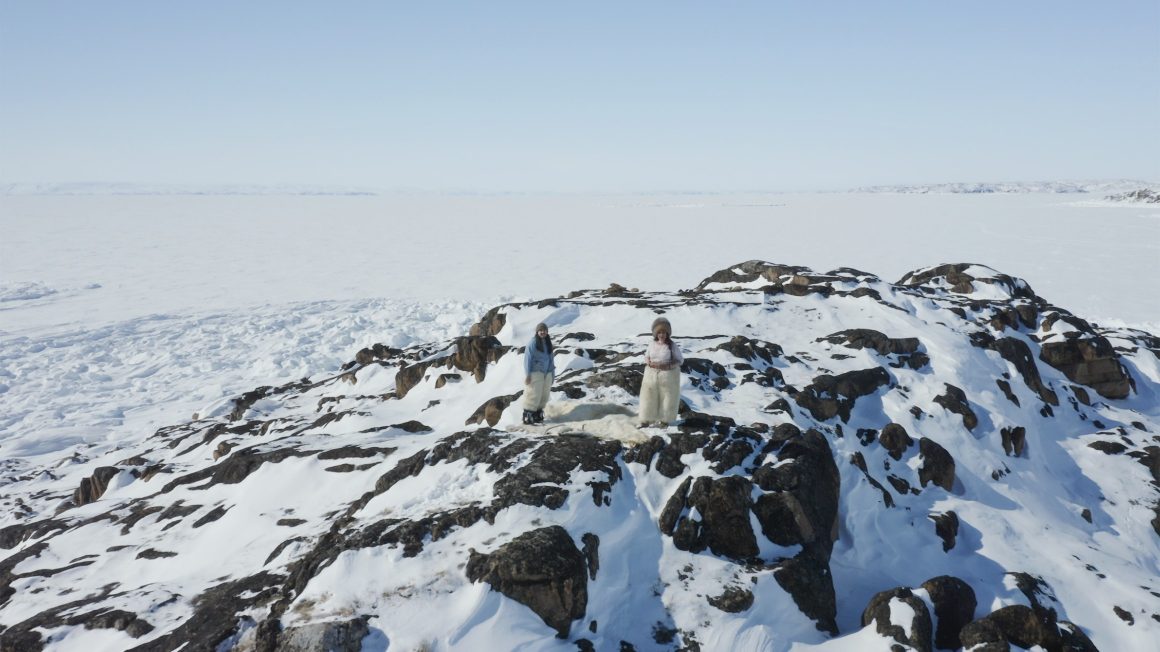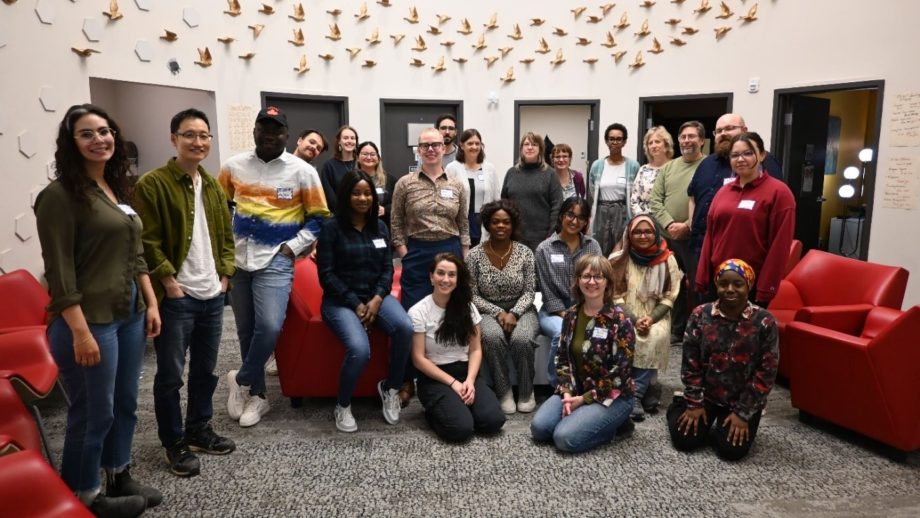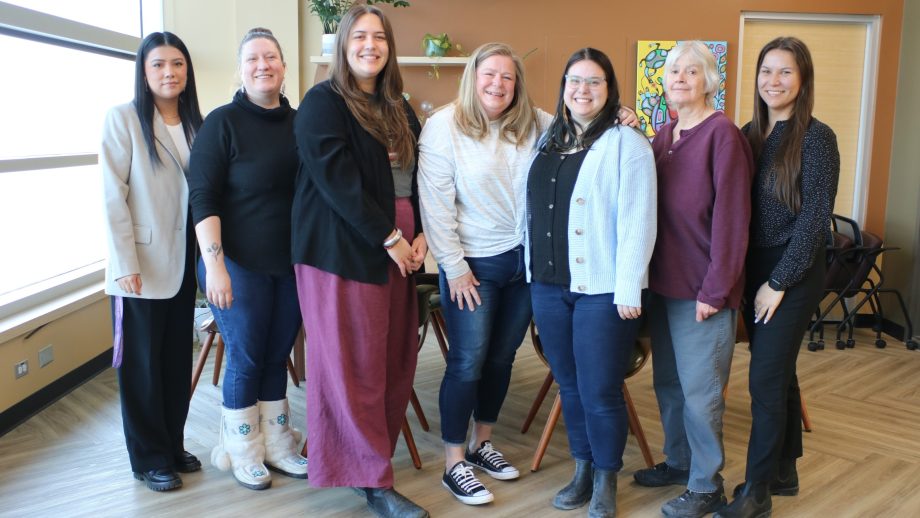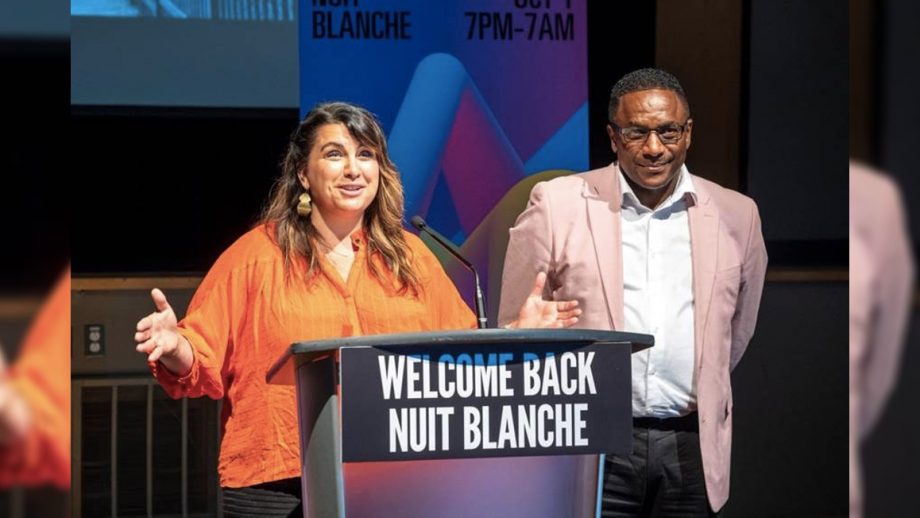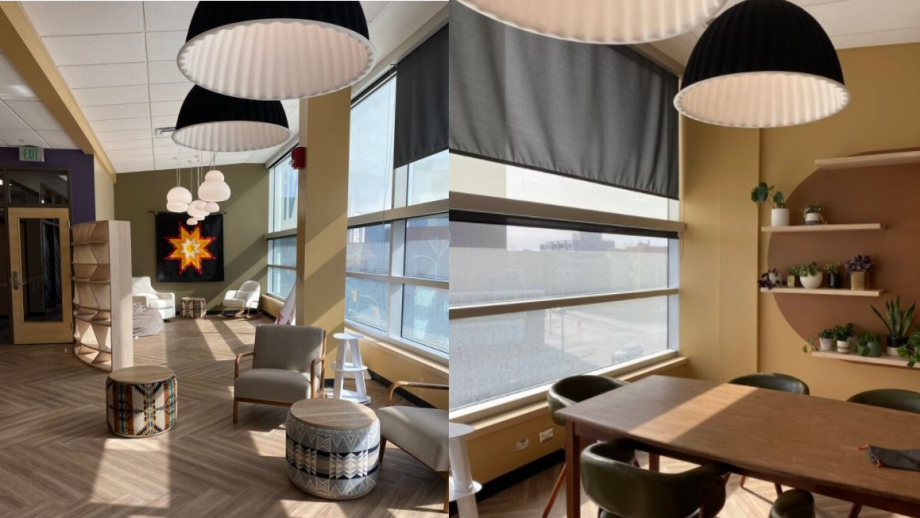A new initiative, produced and curated by The University of Winnipeg’s Dr. Julie Nagam and Concordia University’s Dr. Heather Igloliorte, that connects Circumpolar Indigenous artists from across Canada by way of digital media will premiere at Nuit Blanche Toronto.
ARCTIC XR immerses viewers in 360-degree, screen-based worlds and landscapes envisioned, created, and produced by leading Indigenous artists and innovators. Debuted in July as a virtual reality experience at the international Arctic Arts Summit in Whitehorse, Yukon, ARCTIC XR later premiered at the 59th International Art Exhibition of La Biennale de Venezia in Venice. There, it was showcased in cooperation with the ÁRRAN 360° project, which featured films from Sámi filmmakers.
“The ripple effect generated from this level of international and national exposure for this project will be seen over the next 10 years,” said Nagam. “It will be super exciting to watch the fields of augmented and extended reality.”
The ripple effect generated from this level of international and national exposure for this project will be seen over the next 10 years.
Dr. Julie Nagam
A Canada Research Chair in Indigenous Arts, Collaboration and Digital Media, Director of The Space Between Us project, and professor at UWinnipeg, Nagam shares production and curation credit with Dr. Igloliorte, Director of Inuit Futures in Arts Leadership: The Pilimmaksarniq/Pijariuqsarniq Project and Circumpolar lead for The Space Between Us project. Nagam and Igoliorte are also supported by a dedicated post-production team from across the country. The abbijijiwan New Media Lab hosted and coordinated the project with Jasmin Winter, who led training and mentorship in 3D graphics software Blender, 360-degree videography, sound, and new media technologies.
Digital Storytelling
Among notable artists and creators participating are Casey Koyczan, Mark Igloliorte, Tanya Tagaq, Laakkuluk Williamson Bathory, and Melaw Nakehk’o. Using new-media technologies within the scope of extended reality (XR), the participants explore the future of digital storytelling and weave in culturally significant narratives.
Bathory’s experience teleports users to the imaginary Republic of Tartupaluk, blending live-action video, motion-capture animation, and video effects to bring to life an Inuit utopia set on a tiny island within the traditional Inuit territorial waters of both Canada and Greenland. Tagaq creates a dream with vivid colours, animations, and composition from her book Split Tooth. Koyczan’s work, titled Ełeghàà; All At Once, presents multiple overlapping timelines: a past with Denendeh (giant animals) roaming the North, the present landscape, and a technology-infused future where humanity lives in orbiting space stations.
The ARCTIC XR incubator provided the circumpolar artists with in-person, one-on-one training and mentoring, specifically by mid-career and established artists in the 360-creation project. These sessions were hosted by Concordia University, where artists worked to create moving images, animation, and sound-based work in augmented reality (AR). The project aims to not only empower and broaden the network of Indigenous creators throughout Canada and beyond but inspire the continued creation of similarly immersive content.
“We were thrilled to watch many of these artists work in digital media for the first time,” said Nagam. “It was magical to witness the growth and transformation of their art practices.”
ARCTIC XR will next be on display in early October at Nuit Blanche Toronto, for which Nagam is Artistic Director. The event, among the world’s largest international art exhibits, will feature more than 150 works by local, national, and international artists. The project will also appear at Yellowknife International Film Festival, in partnership with Western Arctic Moving Pictures and the aRTLeSS Collective.
ARCTIC XR was created in conjunction with the aabijijiwan New Media Lab, the 4,000-square foot research centre located at UWinnipeg’s Richardson College for the Environment, as well as The Space Between Us and Inuit Futures partnerships, which receives funding from the Indigenous Screen Office and Canada Media Fund. The Space Between Us and Inuit Futures are both Social Sciences and Humanities Research Council-supported (SSHRC) projects.

